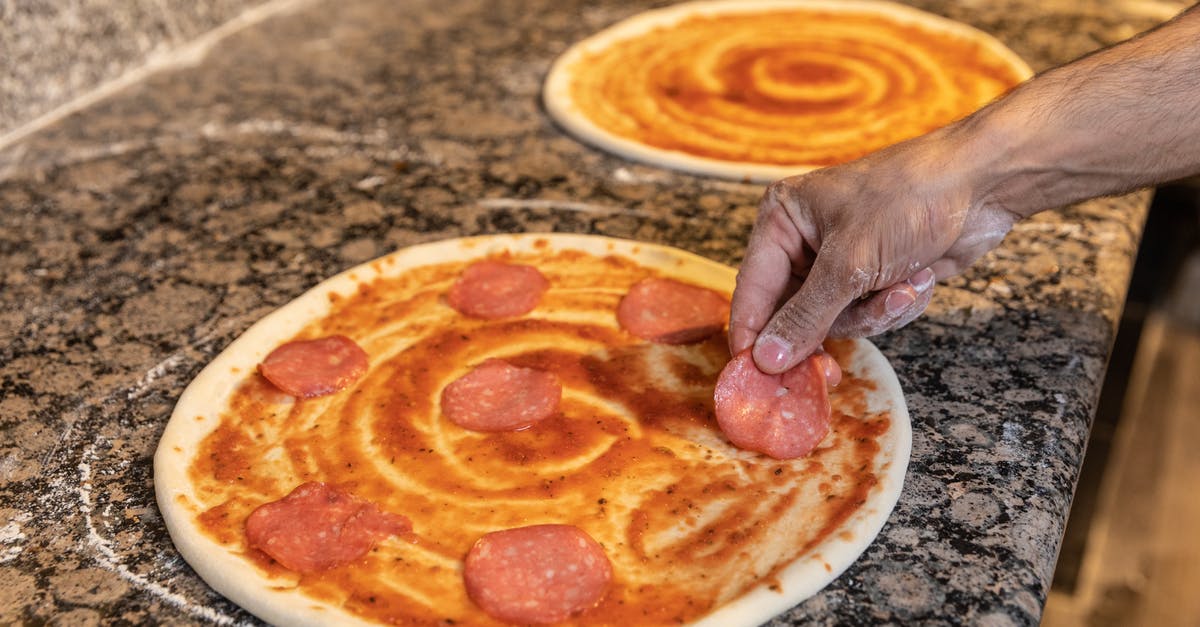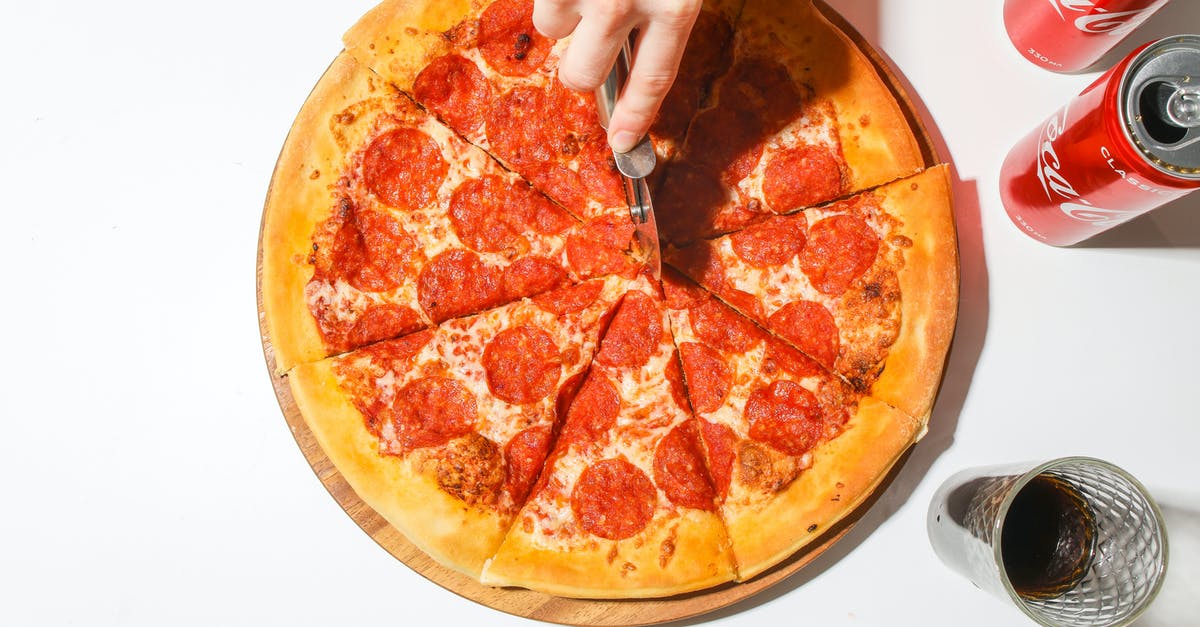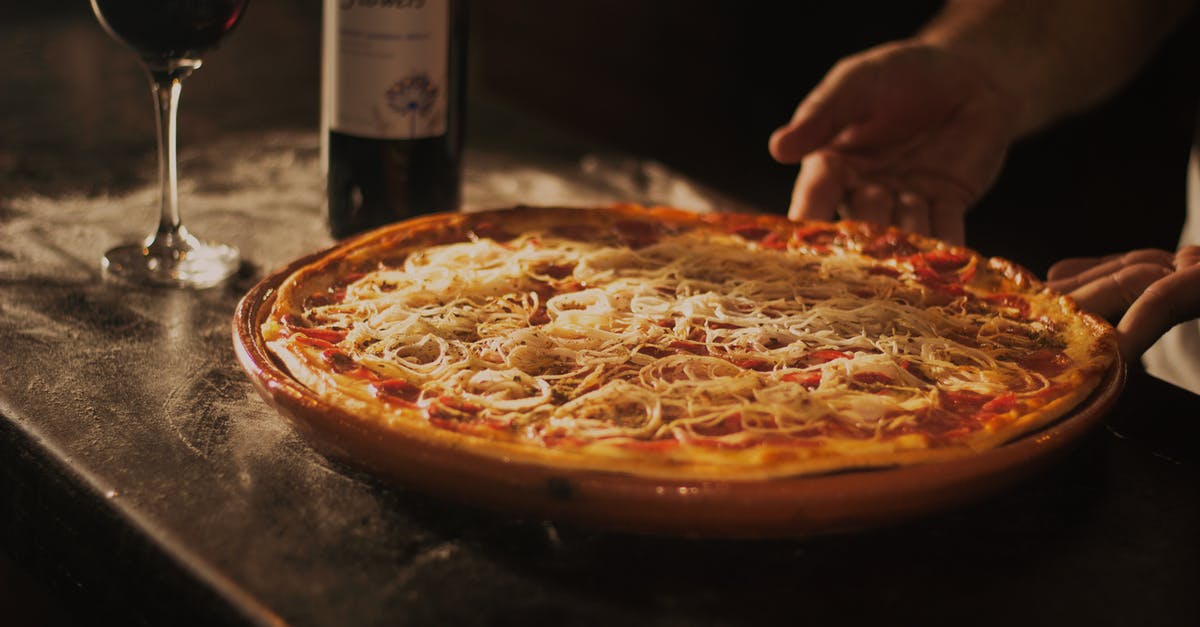What are the impacts of common pizza dough errors?

I'm diving into the world of making pizzas from scratch, and I'd like to take a systematic approach to the possible mistakes I could make with regards to the dough.
What impact do each of the following errors have on the final taste/texture of the pizza crust?
- Using old yeast or too much/too little yeast (I assume that using old yeast is the same as using too little yeast?)
- Too high or too low of a water to flour ratio
- Overworking or underworking the dough
- Too much or too little resting time of dough
Best Answer
I don't see anything in the question that is peculiar to pizza dough. Anything I answer will apply to any kind of yeast-risen, glutenous dough.
The goal with any such dough is a well hydrated protein matrix that has been arranged in sheets that will trap the gas produced by yeast.
- If the yeast is dead it won't be able to produce gas and your bread will be somewhere between a cracker and shoe leather- depending on how thick you roll it out.
- Using too little yeast is not the same as dead yeast. If you use too little yeast (within reason) they will take a long time to reproduce, eat, and blow up your stretchy proteins. They will be producing a lot of flavor during this period. This will generally taste good.
- If you use too much yeast (within reason) the yeast will act very quickly. This is nice for speed but it will result in a much less developed flavor. Neither is a problem so you can choose for yourself.
- Using too little water will result in not enough gluten development and a dry, or crumbly dough. The dough won't hold gases and there will also not be enough steam when baking so the dough will be more dense.
- Too much water and you have a batter that can't be worked with.
- Over working a dough isn't so much of a concern. It is possible to over knead but it is hard to do. See: Possible to over-knead dough?.
- Under working the dough will result in less gluten development and very similar results as using too little water- basically you will have unleavened biscuit dough. The exception is if you are following a "no-knead" recipe. In this case the dough is allowed to rest for days which lets the protein sheets form on their own.
- Resting the dough is necessary both to relax the protein mesh that you created as well as to allow the yeast a chance to blow it up with some CO2. Not long enough and you won't be able to roll out the dough because it will be too tight and it won't be risen because the yeast haven't eaten. Too long and the bubbles will coalesce into large open cavities. A good rule of thumb is "doubled in volume". Usually about an hour but this is highly dependent on how much yeast you use, how much water, and the ambient temperature.
The end result is that you don't need to worry about most of these things. The biggest mistakes I see people make is making a dough too dry or simply not kneading enough. It is easier to add flour than water so put in less than the full amount of flour, knead for a while, if the dough stays too sticky then add a bit more flour and knead in.
As answers to other questions have said- you want a dough that is "smooth and elastic" it isn't sticky and looks homogeneous. After just a couple tries you will get a feel for how wet that means and you'll be an expert.
For pizza dough in particular- almost as important as the dough construction is the baking temperature. You want to cook it as hot as you can. 500F in an oven or on a grill. It will only take 5-10 minutes. The fast hot cooking will do a lot for your crust texture. It makes the difference between a crispy, chewy pizza crust and a soft, bready (and soggy under the toppings) crust.
Pictures about "What are the impacts of common pizza dough errors?"



What can go wrong with pizza dough?
Tearing crust is a common pizza dough problem. If the gluten in your pizza dough hasn't developed enough, it can cause your dough to tear easily. Developed gluten is what gives your dough its pizza crust texture. If not processed enough when stretched, your dough will try to bounce back to its original ball shape.What happens if you overwork pizza dough?
Sometimes when too much flour is added, dough will come out hard and stiff. This can be caused by overworking the dough either by hand or with a roller. Overworking dough will pop all the tiny bubbles that make pizza crust so airy and fluffy once cooked. The hard crust can also be caused by the type of flour you use.How can you tell if pizza dough is bad?
If you take the dough out of the fridge and its texture is diminished or it is exceptionally dry feeling, with a crusty appearance, it's probably past its prime. Put it in the bin. Pizza dough that has a grey color, rather than a fresh white or beige one, or dough that has flecks of grey, is also likely spoiled.What happens if there is too much yeast in pizza dough?
Too much yeast could cause the dough to go flat by releasing gas before the flour is ready to expand. If you let the dough rise too long, it will start having a yeast or beer smell and taste and ultimately deflate or rise poorly in the oven and have a light crust.12 Errors in Pizza Dough Making You Should Avoid - Top 12 Errors!
More answers regarding what are the impacts of common pizza dough errors?
Answer 2
Using old yeast or too much/too little yeast (I assume that using old yeast is the same as using too little yeast?)
- Instant yeast is pretty well preserved as it's encased in a starch binder, and I've never seen it go bad (6-12 months is the longest I've had a large container of it).
- Cake yeast lasts only a few weeks (but most grocery stores don't sell it like this)
- Too much yeast will smell and taste yeasty, and you'll end up with overly bubbly dough (huge air pockets)
- Too little yeast will require more rise time, but otherwise is usually fine. Most recipes call for doubling in the first and second rises, and less yeast will just take longer to reproduce and expand the dough.
Over the years I've reduced the amount of yeast in my doughs in favour of a longer refrigerator rise stage (24-48 hours). My main pizza dough recipe used to be 3 tsp per 4 cups of flour and now is only 1.5 tsp.
Too high or too low of a water to flour ratio
- Too much water will make for super sticky dough (super difficult to work with, huge bubbles when cooked)
- Too little will make for tough dough (chewy, dense)
I find a slightly sticky dough works best, with a long (and cold) first proof.
Overworking or underworking the dough
I suggest underworking the dough and letting it rise the first time for 24-48 (or 72) hours in the fridge. This allows natural processes to soften the proteins and produce more amylase which makes for a better dough overall.
My current pizza dough recipe has about 5-10 minutes of mixing ingredients by hand, and 2-3 folds once dumped on a floured counter. I don't kneed it at all, though it is mixed very thoroughly with a spatula.
- Overworking ends up in a very chewy dough
- Underworking (and not proofing for long enough) results in dough that is difficult to stretch
For what it's worth, I stretch balled dough most of the time with a French style rolling pin. It results in a relatively thin but risen crust, not much different than when stretching by hand (but a bit simpler when doing a bunch quickly).
Too much or too little resting time of dough
Most breads (including pizza) follow a two step rise process. As I understand it:
- The first rise is breeding the yeast culture and building the basic flavour. It can also improve the structure if it's a long rise (like the no-kneed fridge doughs).
- The second rise is about defining the overall size/rise of the dough and pliability. For pizza, the second rise is enough to allow the dough to be workable (usually not more than doubling the size of the dough balls). Too long here ends up in a very bubbly dough, sometimes enough to push the toppings around.
I find that a good pizza dough will have a very particular feel after you ball it up after the first rise. A chef once showed this to me and described it as soft as a newborn's skin and a bit bubbly on the surface. You can feel a great pizza dough ball and it will be special. I tend to aim for a dough on the more plastic side of soft and bubbly now, which is a bit stickier and rises a bit better in a home oven.
Note that breads and buns are usually denser, more like plasticine (so less bubbly/soft). Some breads are even stickier (like brioche and sweet buns). Getting a feel for this seems to be critical in making great breads.
Sources: Stack Exchange - This article follows the attribution requirements of Stack Exchange and is licensed under CC BY-SA 3.0.
Images: Farhad Ibrahimzade, Polina Tankilevitch, Kristina Paukshtite, Edward Eyer
